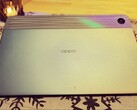Verdict: Flagship Android tablet experience at a mid-range price
The new premium tablet from Oppo is a true multi-talent in a high-quality design. Thanks to its large 13.2-inch screen and the fast Snapdragon 8 Elite SoC, the Oppo Pad 4 Pro has strong arguments for a purchase in the mid-range. It has little competition in this segment or rather, alternatives like the Samsung Galaxy Tab S10 Ultra and the iPad Pro 13 are placed in the high-end of the spectrum.
The LCD of the Oppo Pad 4 Pro has certain disadvantages compared to the OLED offerings from the competition in terms of contrast, but the PMW-free display and high resolution are definite positives; sensitive users in particular can thus use the Oppo tablet without hesitation.
Furthermore, the power consumption is extremely low for a large tablet, even without an OLED display.
Given the Oppo tablet's price, there are few real points of criticism.
Nonetheless, there is one hardware deficiency that remains puzzling and one that could become quite frustrating in everyday use: the missing fingerprint sensor. During our time with the device, the existing Face Unlock function works rather poorly on the Pad 4 Pro and is also less secure compared to a conventional fingerprint sensor.
Also, the lack of 5G and GNSS capabilities and issues with palm recognition leave much to be desired.
Pros
Cons
Price and availability
The Oppo Pad 4 Pro has been released exclusively in China at this point. Prices start from ¥3,299 (approx. €400) for 8 GB RAM and 256 GB storage.
At Trading Shenzhen, our rental partner, prices start at around €520 for the Oppo Pad 4 Pro. Similar to its counterpart, the OnePlus Pad 2 Pro, which has near-identical specification, a European launch seems likely given that the predecessors of both tablets were released globally.
However, Oppo has not yet confirmed when or at what price the tablets will be launched in Europe.
Table of Contents
- Verdict: Flagship Android tablet experience at a mid-range price
- Specifications of the Oppo Pad 4 Pro
- Case: Glass-aluminum construction with thin edges
- Features: Extra-large tablet with USB 3.2
- Software: ColorOS 15 based on Android 15 with seven years of updates
- Communication and GNSS: No 5G or navigation
- Cameras: Usable 13 MP shots in good lighting
- Accessories and Warranty: 67 W adapter comes in the box
- Input devices and operation: Oppo cuts a few important corners
- Display: Bright 13.2-inch 144 Hz LTPS panel with no PWM
- Performance: Flagship Qualcomm SoC takes on the Apple M3
- Games: Big tablet = big gaming fun?
- Emissions: Oppo Pad 4 Pro stays pretty cool
- Energy management: Low power consumption with decent battery life
- Notebookcheck's impressions of the Oppo Pad 4 Pro
- Potential competitors in comparison
The Oppo Pad 4 Pro is positioned as a direct competitor to the Apple iPad Pro 13 and iPad Air 13. This is because the Pad 4 Pro features a flagship Qualcomm Snapdragon 8 Elite SoC, up to 16 GB RAM, and 512 GB storage in a form factor that is similar to the iPad Pro and iPad Air.
Unlike the Samsung Galaxy Tab S10 Ultra, the Oppo Pad 4 Pro uses a 7:5 aspect ratio for the display, which corresponds to that of an A4 sheet paper.
Additionally, users have the option of converting the Pad 4 Pro to a work machine with the optional keyboard case with trackpad and a stylus.
Specifications of the Oppo Pad 4 Pro
Case: Glass-aluminum construction with thin edges
The Oppo Pad 4 Pro leaves a strong impression both visually and in terms of haptics, with a housing made of glass and aluminum.
The metal unibody construction ensures that the Pad 4 Pro can easily withstand slight twisting attempts. The matte surface conceals fingerprints very well.
Unfortunately, this mid-range tablet lacks any special certification for dust or water resistance.
The Oppo Pad 4 Pro offers a large 13.2-inch display, but this size makes it difficult to hold it comfortably with one hand, especially since the Pad 4 Pro weighs almost 100 g more than the Huawei MatePad Pro 13.2.
With a thickness of just under 6 mm, the Pad 4 Pro is remarkably slim and exudes a premium feel.
Boasting a screen-to-body ratio of over 87%, the LTPS panel features very thin bezels for a tablet.
For perspective, an iPad Air 13 only achieves an 86% screen-to-body ratio.
That being said, Oppo has not made clear any information about the protective glass used.
Features: Extra-large tablet with USB 3.2
Oppo delivers the Pad 4 Pro tablet with 8 GB, 12 GB, or 16 GB of RAM options along with 256 GB and 512 GB of internal storage.
SKUs with lesser RAM sizes are specified with UFS 4.0 storage and LPDDR5x-4266 memory, while the 16 GB option uses the newer LPDDR5T-4800.
Unfortunately, Oppo does not allow for storage expansion nor offers a 3.5 mm headphone jack with the Pad 4 Pro.
Befitting its price, the Pad 4 Pro features a fast USB 3.2 Gen 1 Type-C port. This port enables a theoretical data transfer rate of up to 5 GBit/s and can also be used as an output for display signals on external screens with the help of a DisplayPort adapter.
There are also three contact points on the back for connecting the 505 g Smart Touch Keyboard Case.
Software: ColorOS 15 based on Android 15 with seven years of updates
In true Oppo fashion, the underlying Android 15 OS is combined with the company's own ColorOS 15 user interface. Security patches during the testing period were up to date till April 2025.
Questions remain about Oppo's plans for software support for the Chinese variant of the tablet, as the manufacturer does not yet officially the Pad 4 Pro in the Oppo Security Center.
The long-term software maintenance of the likes of a Galaxy Tab S10 Ultra with a seven-year update cadence is highly unlikely to be offered by Oppo for the Pad 4 Pro. The Chinese version is more likely to get four to five years of updates.
If the Pad 4 Pro does get a European launch, it will be subject to new EU regulations, meaning that support can be expected until at least 2031.
It is worth mentioning about the Pad 4 Pro's compatibility with Apple devices like the MacBook Pro for sharing photos or files. With the O+ Connect app, the Pad 4 Pro also functions as an external multi-touch screen.
The Boundless View feature is particularly useful, allowing three apps to be used simultaneously across the display boundaries.
Sustainability
Oppo definitely has some catching up to do when it comes to transparency on its sustainable goals.
Unfortunately, there is no specific information on the number of recycled materials used. There is also no focus on user-repairability, and verifying this aspect is nearly impossible.
The packaging of the Pad 4 Pro does not use plastic and is printed with inks based on soybean oil. According to the company's sustainability report, 45% of the fibers used for the packaging are made from recycled materials.
Communication and GNSS: No 5G or navigation
Although the Pad 4 Pro supports the latest Wi-Fi 7 protocol, it does not support access to the fast 6 GHz frequency band for Wi-Fi transmission.
In combination with our reference Asus ROG Rapture GT-AXE11000 router, the Oppo tablet only connects in the 2.4 GHz and 5 GHz bands, although a high speed is still possible with our Wi-Fi 6E router thanks to VHT160 in the 5 GHz frequency band.
We measured receive rates of over 1,800 Mbps at the peak. However, we are well below this when transmitting.
The Pad 4 Pro does not have a GNSS module for determining the location, so the positioning can only be roughly estimated via known Wi-Fi networks. This premium tablet from Oppo does not feature a cellular module either.
| Networking | |
| Oppo Pad 4 Pro | |
| iperf3 transmit AXE11000 | |
| iperf3 receive AXE11000 | |
| Samsung Galaxy Tab S10 Ultra | |
| iperf3 transmit AXE11000 | |
| iperf3 receive AXE11000 | |
| iperf3 transmit AXE11000 6GHz | |
| iperf3 receive AXE11000 6GHz | |
| Apple iPad Air 13 2025 | |
| iperf3 transmit AXE11000 6GHz | |
| iperf3 receive AXE11000 6GHz | |
| Huawei MatePad Pro 13.2 (2025) | |
| iperf3 transmit AXE11000 | |
| iperf3 receive AXE11000 | |
| Lenovo Yoga Tab Plus | |
| iperf3 transmit AXE11000 6GHz | |
| iperf3 receive AXE11000 6GHz | |
| Average 802.11 a/b/g/n/ac/ax/be | |
| iperf3 transmit AXE11000 | |
| iperf3 receive AXE11000 | |
| iperf3 transmit AXE11000 6GHz | |
| iperf3 receive AXE11000 6GHz | |
| Average of class Tablet | |
| iperf3 transmit AXE11000 | |
| iperf3 receive AXE11000 | |
| iperf3 transmit AXE11000 6GHz | |
| iperf3 receive AXE11000 6GHz | |
Cameras: Usable 13 MP shots in good lighting
The cameras on a large device like the Pad 4 Pro are rather secondary for most users, but the Oppo tablet still offers two reasonably usable cameras.
The 8 MP front-facing camera delivers good image quality in daylight with decent sharpness, though there are occasional problems with the exposure.
A 13 MP sensor is present on the back that takes perfectly usable photos of subjects in bright light. However, on closer inspection, the photos show limited details and have a low dynamic range.
Our color analysis under defined artificial light reveals very few major outliers (DeltaE > 10).
Nevertheless, the Pad 4 Pro is well suited for scanning documents or digitizing notes for which there is a special mode in the camera app.
Image comparison
Choose a scene and navigate within the first image. One click changes the position on touchscreens. One click on the zoomed-in image opens the original in a new window. The first image shows the scaled photograph of the test device.
Main cameraMain cameraLow light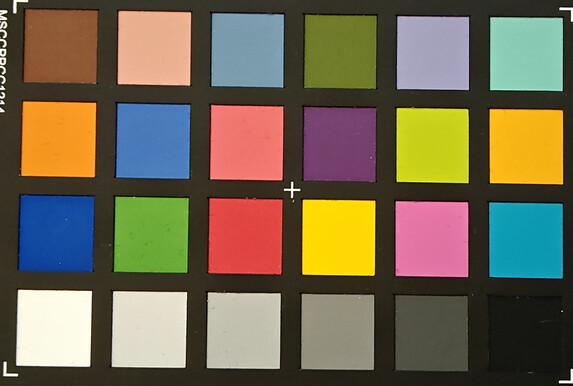

Accessories and Warranty: 67 W adapter comes in the box
The scope of delivery includes a 67 W fast-charging power adapter, a USB Type-A to Type-C data and charging cable, and information material in Chinese.
Our rental partner Trading Shenzhen additionally bundles in an EU adapter for the Chinese charger along with a USB OTG adapter.
Oppo offers the matching Pencil 2 Pro for about €100 and an optional keyboard cover for €130 as additional accessories for the Pad 4 Pro.
Our imported device comes with a 12-month warranty. In the event of a warranty claim, Trading Shenzhen offers the option of sending the tablet to a German shipping address.
Input devices and operation: Oppo cuts a few important corners
Touch inputs are implemented rapidly and accurately on the 13.2-inch LTPS panel with its 540 Hz sampling rate. However, the Pad 4 Pro's touchscreen scans possible touches only 120 times per second as standard.
Thanks to the high 144 Hz refresh rate, animations on the ColorOS interface appear very smooth.
The 7:5 aspect ratio of the Pad 4 Pro is similar to that of a sheet of A4 paper and that of an iPad Air 13 than, for example, those of Galaxy Tabs from Samsung.
The aspect ratio of the Pad 4 Pro thus offers a wider viewing area compared to conventional 16:9 panels, which is particularly advantageous for reading documents or surfing the Internet.
The Pad 4 Pro is compatible with Oppo's Pencil 2 Pro, which weighs around 15 g and is purportedly capable of distinguishing over 16,000 pressure levels. This enables handwritten notes and sketching with the Oppo tablet.
The manufacturer's claimed latency of 2 ms ranks among the best in its class. Unfortunately, we did not receive a test sample of the Pencil 2 Pro to put these claims to test.
Notably, there is no vibration motor in this mid-range tablet. There is no fingerprint scanner either. We really cannot fathom understand why Oppo has cut corners here.
Biometric identification is possible only via face recognition using the front camera. The 2D face recognition did not really convince us in the test, even in good lighting conditions; other manufacturers tend to do this better. This method is also considered to be rather less secure than fingerprints.
Furthermore, the palm rejection feature needs to be optimized on the software side so that inputs with the stylus or finger are not blocked. This did not work reliably on the Pad 4 Pro at the time of testing.
Display: Bright 13.2-inch 144 Hz LTPS panel with no PWM

The Pad 4 Pro sports 13.2-inch LTPS panel that can adaptively reduce the frame rate from 144 Hz to 60 Hz. With a 3,392 x 2,400 resolution, the screen achieves a high pixel density of 315 PPI, which is above the 300 PPi "magic" limit. For comparison, an iPad Pro 13 only manages a 264 PPI pixel density.
Oppo claims a maximum brightness of 600 cd/m², which we can confirm on a pure white background. At an average picture level (APL) 18, the LCD achieved a high 903 cd/m² luminosity, which matches the advertised peak luminance of 900 nits. While not perfect for HDR content, the luminance is sufficient for a good viewing experience.
We could not detect any PWM flickering for the 12-bit panel in our measurement, which is a real advantage for users sensitive to screen flicker.
| |||||||||||||||||||||||||
Brightness Distribution: 93 %
Center on Battery: 672 cd/m²
Contrast: 1461:1 (Black: 0.46 cd/m²)
ΔE ColorChecker Calman: 3.18 | ∀{0.5-29.43 Ø4.78}
ΔE Greyscale Calman: 2.2 | ∀{0.09-98 Ø5}
97.1% sRGB (Calman 2D)
Gamma: 2.396
CCT: 7070 K
| Oppo Pad 4 Pro LTPS LCD, 3392x2400, 13.2" | Samsung Galaxy Tab S10 Ultra AMOLED 2X, 2960x1848, 14.6" | Apple iPad Air 13 2025 IPS, 2732x2048, 12.9" | Huawei MatePad Pro 13.2 (2025) Flexible OLED, 2880x1920, 13.2" | Lenovo Yoga Tab Plus IPS, 2944x1840, 12.7" | |
|---|---|---|---|---|---|
| Screen | 3% | 3% | 27% | -8% | |
| Brightness middle (cd/m²) | 672 | 605 -10% | 607 -10% | 795 18% | 726 8% |
| Brightness (cd/m²) | 652 | 603 -8% | 576 -12% | 791 21% | 691 6% |
| Brightness Distribution (%) | 93 | 98 5% | 87 -6% | 97 4% | 91 -2% |
| Black Level * (cd/m²) | 0.46 | 0.5 -9% | 0.55 -20% | ||
| Contrast (:1) | 1461 | 1214 -17% | 1320 -10% | ||
| Colorchecker dE 2000 * | 3.18 | 2.6 18% | 1.52 52% | 1.1 65% | 4.67 -47% |
| Colorchecker dE 2000 max. * | 4.84 | 5.4 -12% | 3.5 28% | 2.5 48% | 5.6 -16% |
| Greyscale dE 2000 * | 2.2 | 1.6 27% | 2.2 -0% | 2.1 5% | 1.8 18% |
| Gamma | 2.396 92% | 2.08 106% | 2.197 100% | 2.23 99% | 2.249 98% |
| CCT | 7070 92% | 6405 101% | 6929 94% | 6822 95% | 6382 102% |
* ... smaller is better
Screen Flickering / PWM (Pulse-Width Modulation)
| Screen flickering / PWM not detected | |||
In comparison: 53 % of all tested devices do not use PWM to dim the display. If PWM was detected, an average of 8091 (minimum: 5 - maximum: 343500) Hz was measured. | |||
The settings for the display are extensive. In addition to various color profiles, the color temperature and color space can be adjusted as well.
Nevertheless, differences in individual colors are clearly visible even in the rather small sRGB color space. The black level of 0.46 cd/m² ensures a good contrast ratio of around 1:1,500 in everyday use.
Display Response Times
| ↔ Response Time Black to White | ||
|---|---|---|
| 15.1 ms ... rise ↗ and fall ↘ combined | ↗ 10.4 ms rise | |
| ↘ 4.7 ms fall | ||
| The screen shows good response rates in our tests, but may be too slow for competitive gamers. In comparison, all tested devices range from 0.1 (minimum) to 240 (maximum) ms. » 35 % of all devices are better. This means that the measured response time is better than the average of all tested devices (20.2 ms). | ||
| ↔ Response Time 50% Grey to 80% Grey | ||
| 30.6 ms ... rise ↗ and fall ↘ combined | ↗ 20.4 ms rise | |
| ↘ 10.2 ms fall | ||
| The screen shows slow response rates in our tests and will be unsatisfactory for gamers. In comparison, all tested devices range from 0.165 (minimum) to 636 (maximum) ms. » 40 % of all devices are better. This means that the measured response time is similar to the average of all tested devices (31.6 ms). | ||
Performance: Flagship Qualcomm SoC takes on the Apple M3
The Oppo Pad 4 Pro features the Snapdragon 8 Elite chip, which is quite remarkable for the mid-range price segment. In contrast to the Oppo Find N5, the Pad 4 Pro does not use the 8 Elite with seven Oryon Gen 2 Performance cores but a cut-down variant with six cores.
In Geekbench tests, the Pad 4 Pro even outperforms a Galaxy Tab S10 Ultra. The iPad Air 13 with an M3 chip does not come close to the Pad 4 Pro's single-core numbers.
That being said, the Oppo table is quite weak in the AI tests and system benchmarks.
| UL Procyon AI Inference for Android - Overall Score NNAPI | |
| Samsung Galaxy Tab S10 Ultra | |
| Lenovo Yoga Tab Plus | |
| Oppo Pad 4 Pro | |
| Average of class Tablet (2597 - 76852, n=61, last 2 years) | |
| Average Qualcomm Snapdragon 8 Elite (8865 - 22767, n=18) | |
| Huawei MatePad Pro 13.2 (2025) | |
The integrated Adreno 830 GPU is very powerful. In the demanding tier tests, it outperforms an Immortalis-G720 of the Tab S10 Ultra and a solid 44 fps is possible even with a high 4K resolution.
The Adreno 830's performance is often more than 30% than an iPad Air 13 with the M3 chip despite the Apple tablet having to handle significantly fewer pixels.
GFXBench (DX / GLBenchmark) 2.7: T-Rex Onscreen | 1920x1080 T-Rex Offscreen
GFXBench 3.0: on screen Manhattan Onscreen OGL | 1920x1080 1080p Manhattan Offscreen
GFXBench 3.1: on screen Manhattan ES 3.1 Onscreen | 1920x1080 Manhattan ES 3.1 Offscreen
GFXBench: on screen Car Chase Onscreen | 1920x1080 Car Chase Offscreen | on screen Aztec Ruins High Tier Onscreen | 2560x1440 Aztec Ruins High Tier Offscreen | on screen Aztec Ruins Normal Tier Onscreen | 1920x1080 Aztec Ruins Normal Tier Offscreen | 3840x2160 4K Aztec Ruins High Tier Offscreen
| 3DMark / Wild Life Extreme Unlimited | |
| Oppo Pad 4 Pro | |
| Samsung Galaxy Tab S10 Ultra | |
| Apple iPad Air 13 2025 | |
| Lenovo Yoga Tab Plus | |
| Huawei MatePad Pro 13.2 (2025) | |
| 3DMark / Wild Life Extreme | |
| Apple iPad Air 13 2025 | |
| Oppo Pad 4 Pro | |
| Samsung Galaxy Tab S10 Ultra | |
| Lenovo Yoga Tab Plus | |
| Huawei MatePad Pro 13.2 (2025) | |
| 3DMark / Wild Life Unlimited Score | |
| Oppo Pad 4 Pro | |
| Samsung Galaxy Tab S10 Ultra | |
| Huawei MatePad Pro 13.2 (2025) | |
| 3DMark / Solar Bay Score | |
| Oppo Pad 4 Pro | |
| Apple iPad Air 13 2025 | |
| Samsung Galaxy Tab S10 Ultra | |
| Lenovo Yoga Tab Plus | |
| 3DMark / Solar Bay Unlimited Score | |
| Oppo Pad 4 Pro | |
| Apple iPad Air 13 2025 | |
| Samsung Galaxy Tab S10 Ultra | |
| Lenovo Yoga Tab Plus | |
| 3DMark / Steel Nomad Light Unlimited Score | |
| Oppo Pad 4 Pro | |
| Apple iPad Air 13 2025 | |
| Samsung Galaxy Tab S10 Ultra | |
| Lenovo Yoga Tab Plus | |
| Huawei MatePad Pro 13.2 (2025) | |
| 3DMark / Steel Nomad Light Score | |
| Oppo Pad 4 Pro | |
| Apple iPad Air 13 2025 | |
| Samsung Galaxy Tab S10 Ultra | |
| Lenovo Yoga Tab Plus | |
| Huawei MatePad Pro 13.2 (2025) | |
| GFXBench (DX / GLBenchmark) 2.7 / T-Rex Onscreen | |
| Samsung Galaxy Tab S10 Ultra | |
| Lenovo Yoga Tab Plus | |
| Apple iPad Air 13 2025 | |
| Huawei MatePad Pro 13.2 (2025) | |
| Oppo Pad 4 Pro | |
| GFXBench (DX / GLBenchmark) 2.7 / T-Rex Offscreen | |
| Samsung Galaxy Tab S10 Ultra | |
| Oppo Pad 4 Pro | |
| Apple iPad Air 13 2025 | |
| Lenovo Yoga Tab Plus | |
| Huawei MatePad Pro 13.2 (2025) | |
| GFXBench 3.0 / Manhattan Onscreen OGL | |
| Samsung Galaxy Tab S10 Ultra | |
| Lenovo Yoga Tab Plus | |
| Apple iPad Air 13 2025 | |
| Oppo Pad 4 Pro | |
| Huawei MatePad Pro 13.2 (2025) | |
| GFXBench 3.0 / 1080p Manhattan Offscreen | |
| Oppo Pad 4 Pro | |
| Apple iPad Air 13 2025 | |
| Lenovo Yoga Tab Plus | |
| Samsung Galaxy Tab S10 Ultra | |
| Huawei MatePad Pro 13.2 (2025) | |
| GFXBench 3.1 / Manhattan ES 3.1 Onscreen | |
| Samsung Galaxy Tab S10 Ultra | |
| Lenovo Yoga Tab Plus | |
| Apple iPad Air 13 2025 | |
| Oppo Pad 4 Pro | |
| Huawei MatePad Pro 13.2 (2025) | |
| GFXBench 3.1 / Manhattan ES 3.1 Offscreen | |
| Oppo Pad 4 Pro | |
| Lenovo Yoga Tab Plus | |
| Samsung Galaxy Tab S10 Ultra | |
| Apple iPad Air 13 2025 | |
| Huawei MatePad Pro 13.2 (2025) | |
| GFXBench / Car Chase Onscreen | |
| Samsung Galaxy Tab S10 Ultra | |
| Lenovo Yoga Tab Plus | |
| Apple iPad Air 13 2025 | |
| Oppo Pad 4 Pro | |
| Huawei MatePad Pro 13.2 (2025) | |
| GFXBench / Car Chase Offscreen | |
| Oppo Pad 4 Pro | |
| Apple iPad Air 13 2025 | |
| Samsung Galaxy Tab S10 Ultra | |
| Lenovo Yoga Tab Plus | |
| Huawei MatePad Pro 13.2 (2025) | |
| GFXBench / Aztec Ruins High Tier Onscreen | |
| Samsung Galaxy Tab S10 Ultra | |
| Lenovo Yoga Tab Plus | |
| Apple iPad Air 13 2025 | |
| Oppo Pad 4 Pro | |
| Huawei MatePad Pro 13.2 (2025) | |
| GFXBench / Aztec Ruins High Tier Offscreen | |
| Oppo Pad 4 Pro | |
| Samsung Galaxy Tab S10 Ultra | |
| Apple iPad Air 13 2025 | |
| Lenovo Yoga Tab Plus | |
| Huawei MatePad Pro 13.2 (2025) | |
| GFXBench / Aztec Ruins Normal Tier Onscreen | |
| Samsung Galaxy Tab S10 Ultra | |
| Lenovo Yoga Tab Plus | |
| Apple iPad Air 13 2025 | |
| Oppo Pad 4 Pro | |
| Huawei MatePad Pro 13.2 (2025) | |
| GFXBench / Aztec Ruins Normal Tier Offscreen | |
| Oppo Pad 4 Pro | |
| Samsung Galaxy Tab S10 Ultra | |
| Apple iPad Air 13 2025 | |
| Lenovo Yoga Tab Plus | |
| Huawei MatePad Pro 13.2 (2025) | |
| GFXBench / 4K Aztec Ruins High Tier Offscreen | |
| Oppo Pad 4 Pro | |
| Samsung Galaxy Tab S10 Ultra | |
| Apple iPad Air 13 2025 | |
| Lenovo Yoga Tab Plus | |
| Huawei MatePad Pro 13.2 (2025) | |
The Pad 4 Pro performs very well in browser speed tests and the benchmark results are also quite good.
Websites open quickly in everyday use and can be scrolled through smoothly.
| Jetstream 2 - 2.0 Total Score | |
| Apple iPad Air 13 2025 (Safari 18) | |
| Lenovo Yoga Tab Plus (Chrome 132) | |
| Average Qualcomm Snapdragon 8 Elite (75.1 - 329, n=18) | |
| Oppo Pad 4 Pro (Chrome 135) | |
| Samsung Galaxy Tab S10 Ultra (Chrome 130) | |
| Huawei MatePad Pro 13.2 (2025) (Chrome 134) | |
| Average of class Tablet (22.3 - 395, n=68, last 2 years) | |
| Speedometer 3 - Score 3.0 | |
| Apple iPad Air 13 2025 (Safari 18) | |
| Average Qualcomm Snapdragon 8 Elite (11.7 - 36.8, n=17) | |
| Lenovo Yoga Tab Plus (Chrome 132) | |
| Oppo Pad 4 Pro (Chrome 135) | |
| Huawei MatePad Pro 13.2 (2025) (Chrome 134) | |
| Samsung Galaxy Tab S10 Ultra (Chrome 130) | |
| Average of class Tablet (1.25 - 49.1, n=64, last 2 years) | |
| WebXPRT 4 - Overall | |
| Samsung Galaxy Tab S10 Ultra (Chrome 130) | |
| Oppo Pad 4 Pro (Chrome 135) | |
| Huawei MatePad Pro 13.2 (2025) (Chrome 134) | |
| Average Qualcomm Snapdragon 8 Elite (102 - 255, n=18) | |
| Lenovo Yoga Tab Plus (Chrome 132) | |
| Average of class Tablet (26 - 376, n=70, last 2 years) | |
| Octane V2 - Total Score | |
| Apple iPad Air 13 2025 (Safari 18) | |
| Samsung Galaxy Tab S10 Ultra (Chrome 130) | |
| Lenovo Yoga Tab Plus (Chrome 132) | |
| Average Qualcomm Snapdragon 8 Elite (25448 - 95506, n=25) | |
| Oppo Pad 4 Pro (Chrome 135) | |
| Huawei MatePad Pro 13.2 (2025) (Chrome 134) | |
| Average of class Tablet (763 - 138481, n=94, last 2 years) | |
| Mozilla Kraken 1.1 - Total | |
| Average of class Tablet (243 - 27101, n=79, last 2 years) | |
| Oppo Pad 4 Pro (Chrome 135) | |
| Samsung Galaxy Tab S10 Ultra (Chrome 130) | |
| Huawei MatePad Pro 13.2 (2025) (Chrome 134) | |
| Average Qualcomm Snapdragon 8 Elite (383 - 1258, n=20) | |
| Lenovo Yoga Tab Plus (Chrome 132) | |
| Apple iPad Air 13 2025 (Safari 18) | |
* ... smaller is better
| Oppo Pad 4 Pro | Samsung Galaxy Tab S10 Ultra | Huawei MatePad Pro 13.2 (2025) | Lenovo Yoga Tab Plus | Average 256 GB UFS 4.0 Flash | Average of class Tablet | |
|---|---|---|---|---|---|---|
| AndroBench 3-5 | 18% | -12% | -10% | 7% | -37% | |
| Sequential Read 256KB (MB/s) | 3801.54 | 3912.45 3% | 1864.54 -51% | 3868 2% | 3664 ? -4% | 1786 ? -53% |
| Sequential Write 256KB (MB/s) | 3334.62 | 2963.58 -11% | 1441.8 -57% | 3047.6 -9% | 2701 ? -19% | 1337 ? -60% |
| Random Read 4KB (MB/s) | 297.28 | 342.97 15% | 305.89 3% | 241.2 -19% | 381 ? 28% | 246 ? -17% |
| Random Write 4KB (MB/s) | 335.89 | 554.76 65% | 533.47 59% | 290.9 -13% | 405 ? 21% | 279 ? -17% |
Games: Big tablet = big gaming fun?
We take a closer look at the Pad 4 Pro's graphics prowess with current Android games apart from the benchmark package above.
We use GameBench to determine the exact frame rates for two selected games from the Play Store.
High frame rate gaming beyond 100 fps is not possible with the Pad 4 Pro in PUBG Mobile.
That the Snapdragon 8 Elite has plenty of horsepower is evident by the chip's performance in the demanding Genshin Impact.
Here, the frame rate is highly constant in the highest graphics settings. However, frame rates higher than 60 fps are currently not possible in Android.
According to Oppo, however, Pad 4 Pro can support 120 fps in certain games.
Emissions: Oppo Pad 4 Pro stays pretty cool
Temperature
Thanks to the large surface area available for cooling, the resultant waste heat from the Snapdragon 8 Elite can be dissipated well. Apart from a hotspot area, the Pad 4 Pro maintains pleasant case temperatures of under 40 °C even after prolonged load thanks to its graphite and VC cooling.
That being said, a reduction in system performance due to the heat emissions is still evident in 3DMark stress tests.
We determine a moderate throttling of around 20%. Still, the Pad 4 Pro achieves twice the frame rate of the Lenovo Yoga Tab Plus in the Wild Life stress test.
(±) The maximum temperature on the upper side is 44.5 °C / 112 F, compared to the average of 33.6 °C / 92 F, ranging from 20.7 to 53.2 °C for the class Tablet.
(-) The bottom heats up to a maximum of 49.3 °C / 121 F, compared to the average of 33.2 °C / 92 F
(+) In idle usage, the average temperature for the upper side is 26.2 °C / 79 F, compared to the device average of 30 °C / 86 F.
3DMark Steel Nomad Stress Test
| 3DMark | |
| Wild Life Stress Test Stability | |
| Lenovo Yoga Tab Plus | |
| Huawei MatePad Pro 13.2 (2025) | |
| Oppo Pad 4 Pro | |
| Samsung Galaxy Tab S10 Ultra | |
| Wild Life Extreme Stress Test | |
| Huawei MatePad Pro 13.2 (2025) | |
| Apple iPad Air 13 2025 | |
| Oppo Pad 4 Pro | |
| Lenovo Yoga Tab Plus | |
| Samsung Galaxy Tab S10 Ultra | |
| Solar Bay Stress Test Stability | |
| Lenovo Yoga Tab Plus | |
| Apple iPad Air 13 2025 | |
| Oppo Pad 4 Pro | |
| Samsung Galaxy Tab S10 Ultra | |
| Steel Nomad Light Stress Test Stability | |
| Huawei MatePad Pro 13.2 (2025) | |
| Apple iPad Air 13 2025 | |
| Lenovo Yoga Tab Plus | |
| Oppo Pad 4 Pro | |
| Samsung Galaxy Tab S10 Ultra | |
Speakers
One of the strengths of the large Oppo tablet is space for a great audio system with a total of four speakers, with two tweeters and two woofers on each side.
Despite this arrangement, our pink noise measurement shows that the mids are too strong. Bass is perceivable, but other flagship tablets offer more depth to the sound.
A wired headphone solution is possible via the USB Type-C port, while Bluetooth 5.4 serves wireless audio connections.
The Pad 4 Pro supports a wide range of Bluetooth audio codecs, including SBC, AAC, aptX, aptX HD, aptX Adaptive, LDAC, and LHDC.
Oppo Pad 4 Pro audio analysis
(+) | speakers can play relatively loud (85.5 dB)
Bass 100 - 315 Hz
(±) | reduced bass - on average 11.1% lower than median
(±) | linearity of bass is average (8% delta to prev. frequency)
Mids 400 - 2000 Hz
(±) | higher mids - on average 6.3% higher than median
(+) | mids are linear (5.3% delta to prev. frequency)
Highs 2 - 16 kHz
(+) | balanced highs - only 2.9% away from median
(±) | linearity of highs is average (7.5% delta to prev. frequency)
Overall 100 - 16.000 Hz
(+) | overall sound is linear (12.9% difference to median)
Compared to same class
» 22% of all tested devices in this class were better, 4% similar, 74% worse
» The best had a delta of 7%, average was 20%, worst was 129%
Compared to all devices tested
» 12% of all tested devices were better, 3% similar, 86% worse
» The best had a delta of 4%, average was 24%, worst was 134%
Lenovo Yoga Tab Plus audio analysis
(+) | speakers can play relatively loud (87.3 dB)
Bass 100 - 315 Hz
(±) | reduced bass - on average 12.3% lower than median
(±) | linearity of bass is average (11.9% delta to prev. frequency)
Mids 400 - 2000 Hz
(+) | balanced mids - only 4.7% away from median
(+) | mids are linear (4.2% delta to prev. frequency)
Highs 2 - 16 kHz
(+) | balanced highs - only 3.7% away from median
(+) | highs are linear (4.4% delta to prev. frequency)
Overall 100 - 16.000 Hz
(+) | overall sound is linear (11.4% difference to median)
Compared to same class
» 13% of all tested devices in this class were better, 4% similar, 84% worse
» The best had a delta of 7%, average was 20%, worst was 129%
Compared to all devices tested
» 7% of all tested devices were better, 2% similar, 91% worse
» The best had a delta of 4%, average was 24%, worst was 134%
Energy management: Low power consumption with decent battery life
Power consumption
Despite the slim housing, the Oppo Pad 4 Pro sports a large 12,140 mAh battery. The battery can be charged with a maximum of 67 W; wireless charging is not supported.
Charging the Pad 4 Pro takes around 1.5 hours with the right power adapter.
The power consumption is remarkably low for a tablet this size. At less than 2 W when idle, the power draws are on par with less efficient smartphones.
Even under load, the Pad 4 Pro draws significantly less power than the competition with OLED panels.
| Off / Standby | |
| Idle | |
| Load |
|
Key:
min: | |
| Oppo Pad 4 Pro 12140 mAh | Samsung Galaxy Tab S10 Ultra 11200 mAh | Apple iPad Air 13 2025 mAh | Huawei MatePad Pro 13.2 (2025) 5050 mAh | Lenovo Yoga Tab Plus 10200 mAh | Average Qualcomm Snapdragon 8 Elite | Average of class Tablet | |
|---|---|---|---|---|---|---|---|
| Power Consumption | -119% | -168% | -81% | -32% | -3% | -68% | |
| Idle Minimum * (Watt) | 1.5 | 3.34 -123% | 2.1 -40% | 3.74 -149% | 1.5 -0% | 1.09 ? 27% | 2.05 ? -37% |
| Idle Average * (Watt) | 1.8 | 5 -178% | 8.3 -361% | 4.24 -136% | 1.8 -0% | 1.66 ? 8% | 4.02 ? -123% |
| Idle Maximum * (Watt) | 2.2 | 5.11 -132% | 8.5 -286% | 4.34 -97% | 2.3 -5% | 1.879 ? 15% | 4.37 ? -99% |
| Load Average * (Watt) | 5.8 | 12.77 -120% | 11.9 -105% | 6.94 -20% | 11.1 -91% | 8.87 ? -53% | 9.33 ? -61% |
| Load Maximum * (Watt) | 11.4 | 15.94 -40% | 16.9 -48% | 11.8 -4% | 18.5 -62% | 12.8 ? -12% | 13.6 ? -19% |
* ... smaller is better
Power consumption: Geekbench (150 cd/m²)
Power consumption: GFXbench (150 cd/m²)
Battery life
With display brightness adjusted to 150 cd/m², the Pad 4 Pro shows impressive endurance, lasting almost 18 hours in our Wi-Fi test and 21.5 hours of continuous video playback — very good for a tablet of its size.
| Oppo Pad 4 Pro 12140 mAh | Samsung Galaxy Tab S10 Ultra 11200 mAh | Apple iPad Air 13 2025 mAh | Huawei MatePad Pro 13.2 (2025) 5050 mAh | Lenovo Yoga Tab Plus 10200 mAh | |
|---|---|---|---|---|---|
| Battery runtime | -46% | -26% | -49% | -30% | |
| Reader / Idle (h) | 43.2 | 15.6 -64% | 25.5 -41% | 23.7 -45% | |
| H.264 (h) | 21.5 | 12 -44% | 13.8 -36% | 16.6 -23% | |
| WiFi v1.3 (h) | 18 | 9.8 -46% | 13.2 -27% | 9.2 -49% | 12.8 -29% |
| Load (h) | 4.9 | 3.5 -29% | 5 2% | 3.7 -24% |
Notebookcheck's impressions of the Oppo Pad 4 Pro
The Oppo Pad 4 Pro is an excellent LCD alternative to the OLED competition that offers a flagship SoC for significantly lower price.
Oppo Pad 4 Pro
- 05/25/2025 v8
Marcus Herbrich
Potential competitors in comparison
Image | Model / Review | Price | Weight | Drive | Display |
|---|---|---|---|---|---|
| Oppo Pad 4 Pro Qualcomm Snapdragon 8 Elite ⎘ Qualcomm Adreno 830 ⎘ 12 GB Memory, 256 GB | Amazon: 1. $11.90 YANMONGI 1 Pack Screen Prote... 2. $120.22 Original OPPO Pencil 2 for O... 3. $21.63 MIGOTODA PU Leather PC Mater... List Price: 587€ | 675 g | 256 GB UFS 4.0 Flash | 13.20" 3392x2400 315 PPI LTPS LCD | |
| Samsung Galaxy Tab S10 Ultra MediaTek Dimensity 9300+ ⎘ ARM Immortalis-G720 MP12 ⎘ 12 GB Memory, 256 GB | Amazon: 1. $899.99 Samsung Galaxy Tab S10+ Plus... 2. $1,149.99 Samsung - Galaxy Tab S10 Ult... 3. $1,097.57 Samsung Galaxy Tab S10 Ultra... List Price: 1339€ | 718 g | 256 GB UFS 4.0 Flash | 14.60" 2960x1848 239 PPI AMOLED 2X | |
| Apple iPad Air 13 2025 Apple M3 ⎘ Apple M3 9-Core GPU ⎘ 8 GB Memory, 128 GB NVMe | Amazon: $699.00 List Price: 949€ | 616 g | 128 GB NVMe | 12.90" 2732x2048 265 PPI IPS | |
| Huawei MatePad Pro 13.2 (2025) HiSilicon Kirin T92 ⎘ HiSilicon Maleoon 920 ⎘ 12 GB Memory, 512 GB | Amazon: 1. $29.48 FXYJBNJKLV for Huawei MatePa... 2. $12.98 Puccy 2 Pack Camera Lens Pro... 3. $29.99 Case for Huawei MatePad Pro ... List Price: 1199€ | 580 g | 512 GB UFS 3.1 Flash | 13.20" 2880x1920 262 PPI Flexible OLED | |
| Lenovo Yoga Tab Plus Qualcomm Snapdragon 8 Gen 3 ⎘ Qualcomm Adreno 750 ⎘ 12 GB Memory, 256 GB | Amazon: 1. $539.99 Lenovo - Yoga Tab Plus - 12.... 2. $14.99 ProCase 2 Pack Screen Protec... 3. $249.00 Lenovo Idea Tab Plus - Light... List Price: 799€ | 640 g | 256 GB UFS 4.0 Flash | 12.70" 2944x1840 273 PPI IPS |
Transparency
The selection of devices to be reviewed is made by our editorial team. The test sample was provided to the author as a loan by the manufacturer or retailer for the purpose of this review. The lender had no influence on this review, nor did the manufacturer receive a copy of this review before publication. There was no obligation to publish this review. As an independent media company, Notebookcheck is not subjected to the authority of manufacturers, retailers or publishers.
This is how Notebookcheck is testing
Every year, Notebookcheck independently reviews hundreds of laptops and smartphones using standardized procedures to ensure that all results are comparable. We have continuously developed our test methods for around 20 years and set industry standards in the process. In our test labs, high-quality measuring equipment is utilized by experienced technicians and editors. These tests involve a multi-stage validation process. Our complex rating system is based on hundreds of well-founded measurements and benchmarks, which maintains objectivity. Further information on our test methods can be found here.




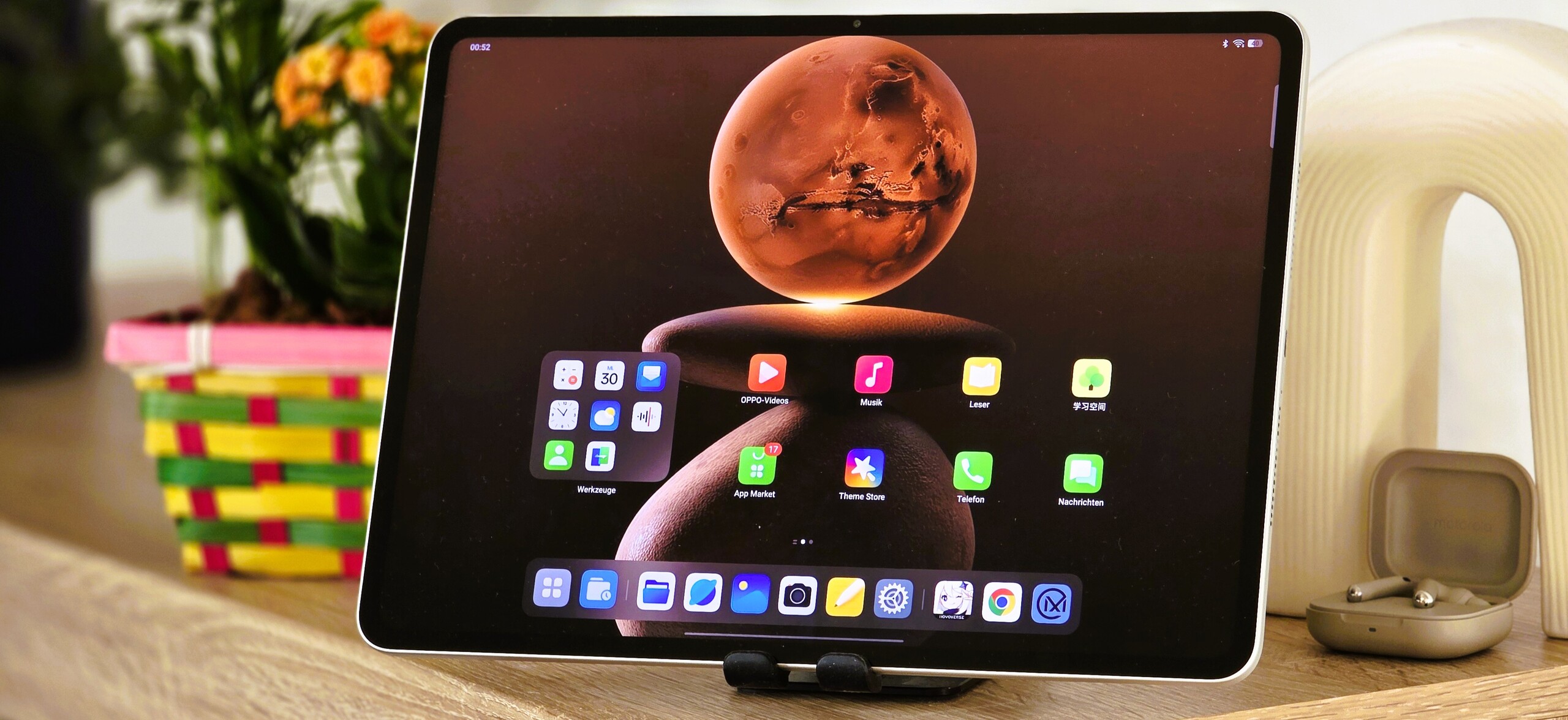


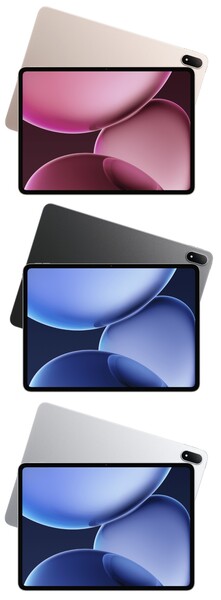







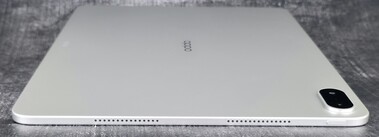


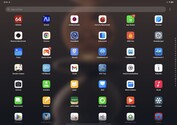

















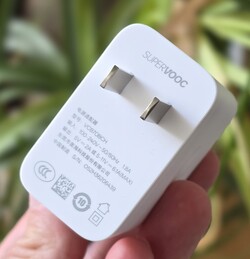
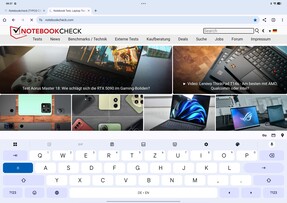
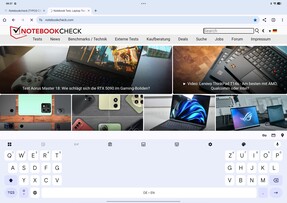

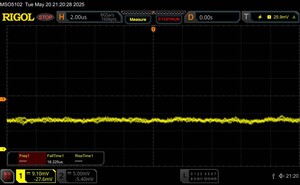
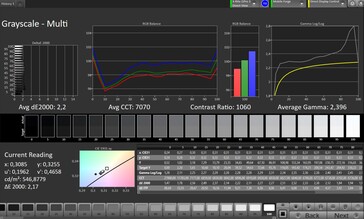
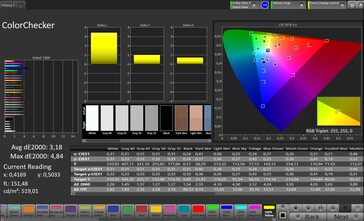
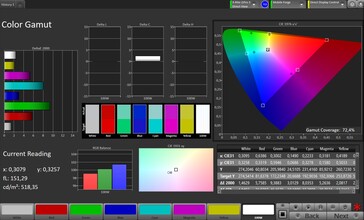
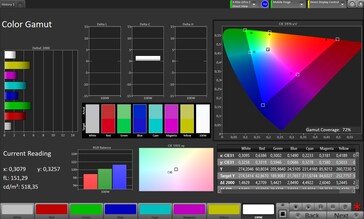
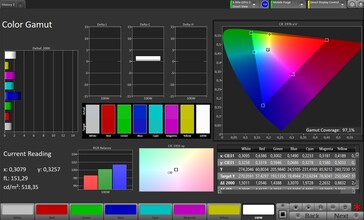
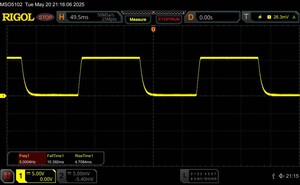

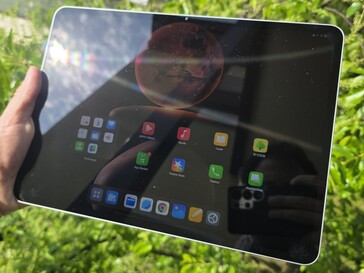
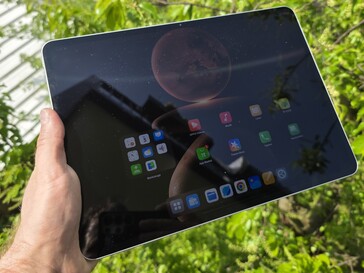

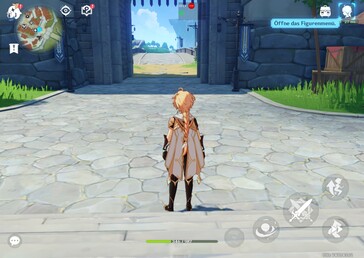


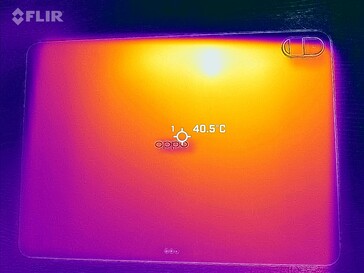
 Total Sustainability Score:
Total Sustainability Score: 








